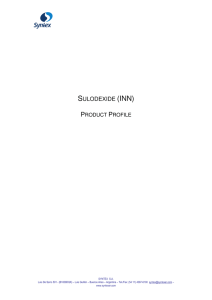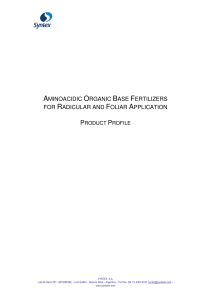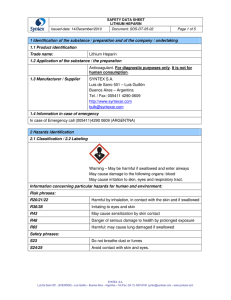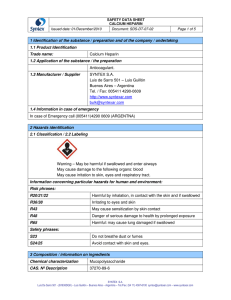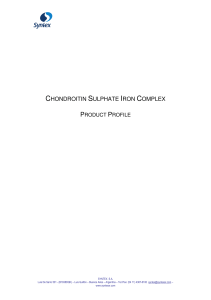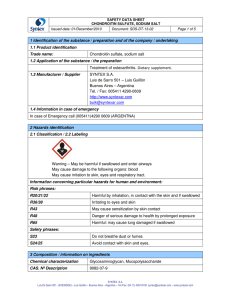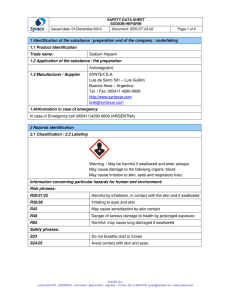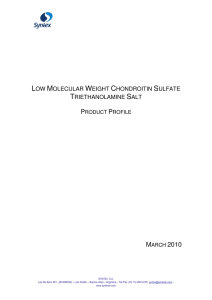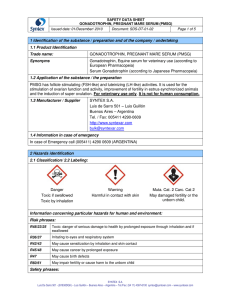C – I (III)
advertisement
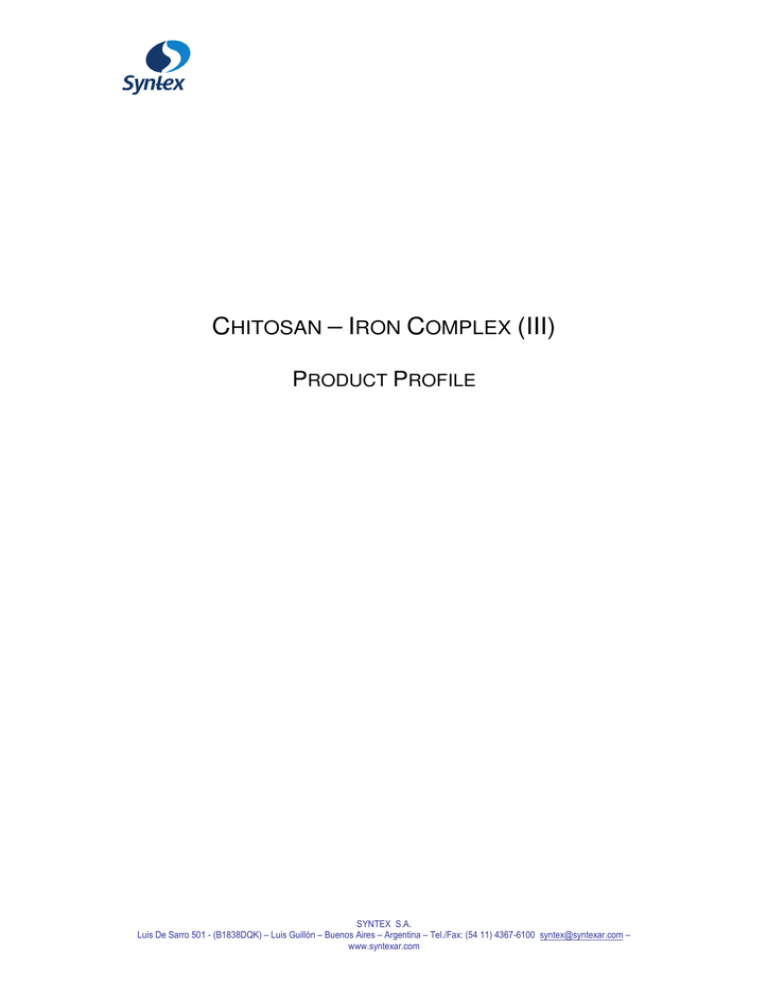
CHITOSAN – IRON COMPLEX (III) PRODUCT PROFILE SYNTEX S.A. Luis De Sarro 501 - (B1838DQK) – Luis Guillón – Buenos Aires – Argentina – Tel./Fax: (54 11) 4367-6100 syntex@syntexar.com – www.syntexar.com Brief Introduction Chitin is one of the most abundant natural polysaccharides, obtained industrially from fishing activity residues, particularly crutaceous shells. Chitosan is the chitin desacetyled form, which can be obtained through different desacetylation grades. Having free amino groups, chitosan can be solubilized in acid solutions via protonation of the mentioned amino groups (1). Chitosan is non-toxic, biodegradable, biocompatible and of polycationic behaviour, unlike exclusively polyalcoholic structure polysaccharides. Chitosan then shows two reactivity centres at least, same as alcoholic hydroxyl and amino groups that are acetylation free. This is made by a material with complexing properties of transition metals, which in last years have been subjected to scientific and technical studies (2). Chitosan complexes with iron, copper, zinc, etc. are well known, as well as their applications. Within its activities in macromolecular organometalic compounds, Syntex S.A. has developed Chitosan – Iron (III) complexes with several applications, be they pharmaceutical or different fields of industrial activity. SYNTEX S.A. Luis De Sarro 501 - (B1838DQK) – Luis Guillón – Buenos Aires – Argentina – Tel./Fax: (54 11) 4367-6100 syntex@syntexar.com – www.syntexar.com Use Chitosan –Iron complexes have been prepared, characterized and studied in their relation structure – activity (2). They recognize application as antimicrobial agents where the complex exerts more microbicide activity than chitosan and trivalent iron separatedly (1); in therapeutic environment its use has been investigated inasmuch as ferric biopolymer, as possible drug transporter under the form of controlled liberation pearls (3). In Agriculture, it has been successfully tested for bacterial and fungoid illnesses control in vegetables (4), as wood preservatives, etc. In general, it can be assured that the study of chitosan metallic complexes´ field of application (and chitosan ´s itself) is in permanent expansion. Production Syntex S.A. has produced chitosan – iron (III) macromolecular complexes to bench–top scale (mutigram). Patent Status Syntex S.A. has produced chitosan – iron (III) complexes according to previous bibliography (5) (6) (7) (8) and therefore patenting should not be aspired. Note Ideas and data previously mentioned must be understood just as guidelines in applications development and not as a recommendation of use against any patent. SYNTEX S.A. Luis De Sarro 501 - (B1838DQK) – Luis Guillón – Buenos Aires – Argentina – Tel./Fax: (54 11) 4367-6100 syntex@syntexar.com – www.syntexar.com Bibliographic Reference 1. Burke, A., Yilmaz, E., Hasiri, N., Turk, J. Med. Sci. 30, 341-348 (2000) 2. Wang, X., Du, Y., Fan, L., Liu, H., Hu, Y., Polymer Bulletin 55, 105-113 (2005) 3. Klepka, M. et al; Synchroton Rad. in Nat. Sci., Vol 5 N°3 (2000) (polish) 4. Ben-shalom, N., Pinto, R., US Patent 6589942 (08/07/03) 5. Chiesi, E., et al, Int. J. Biol. Macromol., 15 (3), 145-51 (1993) 6. Ogawa, K., Oka, K., Chem. Materials, 5, 726-28 (1993) 7. Barbucci, R. et al, Macromolecules, 19, 37-42 (1986) 8. Xueqiong Yin et al, Arkivoc (IX) 66-78 (2004) (www.arkat-usa.org) SYNTEX S.A. Luis De Sarro 501 - (B1838DQK) – Luis Guillón – Buenos Aires – Argentina – Tel./Fax: (54 11) 4367-6100 syntex@syntexar.com – www.syntexar.com
